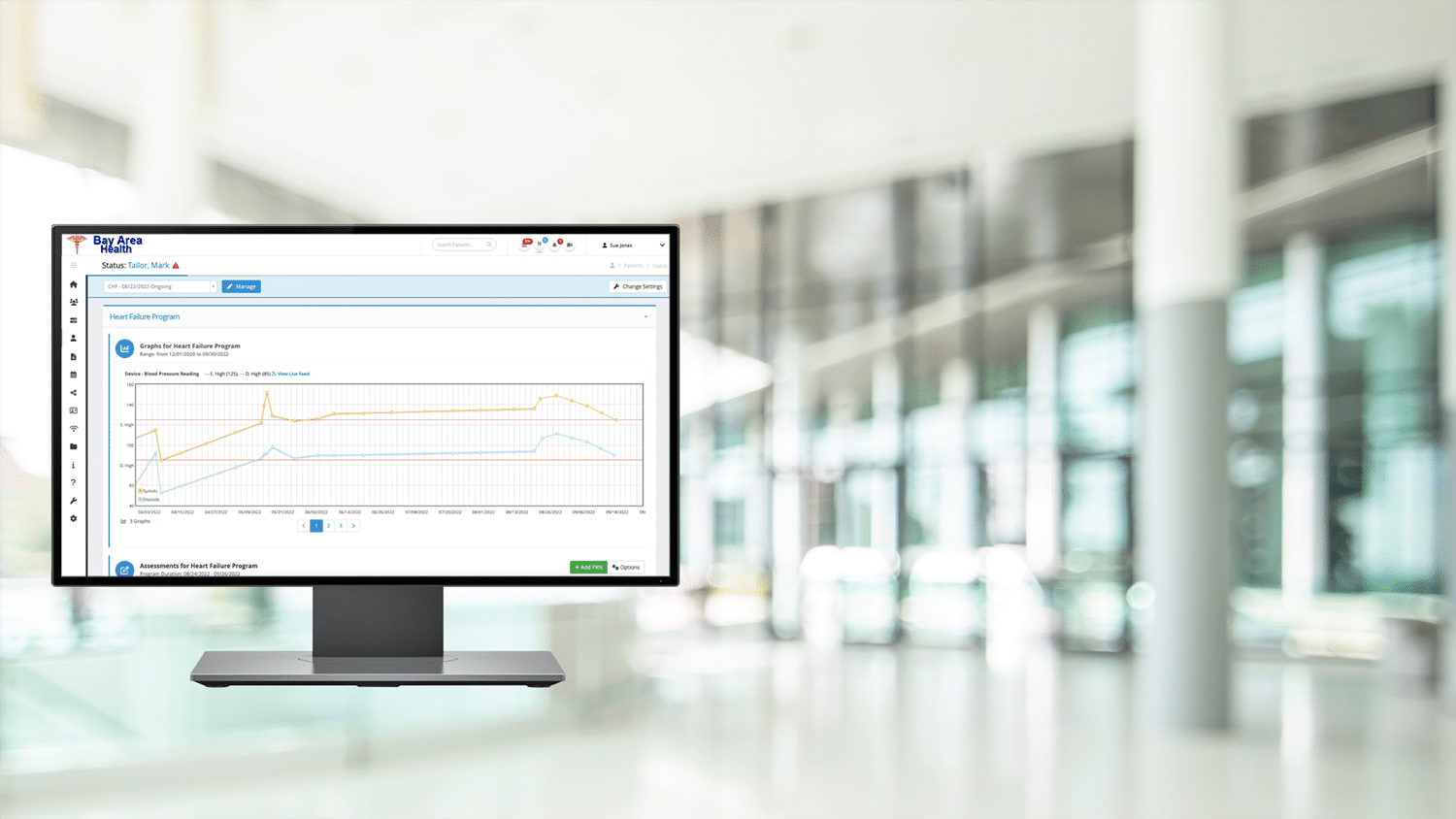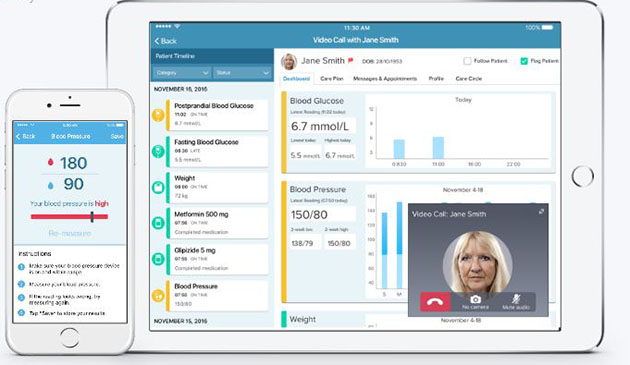User-Friendly Software for Remote Patient Monitoring: Easy Combination and Use
Wiki Article
Revolutionize Medical Care With Remote Person Keeping Track Of Provider
Remote patient surveillance services have arised as a transformative device in this altering atmosphere, supplying an appealing option to lots of healthcare difficulties. As we delve right into the intricacies of remote individual tracking solutions, it becomes apparent that the effects get to far past convenience and efficiency, forming a future where health care is more aggressive, tailored, and easily accessible.Benefits of Remote Patient Tracking
Remote Individual Monitoring deals a wide variety of benefits in boosting health care shipment and patient end results - rpm software. One of the primary advantages of remote person tracking is the capability to give continual care outside of conventional healthcare setups. By remotely tracking essential signs, signs and symptoms, and other health information in real-time, doctor can find potential concerns early, leading to timely interventions and enhanced health end results for clientsMoreover, remote person surveillance boosts person involvement and empowerment. Individuals become a lot more associated with their treatment as they can actively get involved in checking their health and wellness and receiving individualized feedback from medical care specialists. This enhanced involvement usually results in better adherence to treatment plans and a greater sense of control over one's health and wellness.
In addition, remote individual surveillance has actually been shown to minimize health care costs by preventing unnecessary health center readmissions, decreasing emergency clinic brows through, and maximizing resource usage. By proactively recognizing and taking care of persistent conditions health concerns early, remote surveillance can aid avoid costly difficulties and enhance general health care performance.
Influence On Health Care Access
Offered the shown advantages of remote individual tracking in improving person end results and lowering healthcare costs, it is imperative to explore its influence on medical care availability. Remote individual monitoring solutions play a critical role in improving healthcare ease of access by getting rid of geographical obstacles. Individuals staying in remote or underserved areas can currently obtain high quality treatment without the demand to take a trip fars away to healthcare facilities. This is particularly beneficial for people with chronic conditions or movement problems who may find it challenging to gain access to typical health care services routinely.In addition, remote client monitoring enhances healthcare ease of access by offering constant surveillance and prompt interventions, reducing the need for constant in-person brows through. This not only saves time for both people and doctor however additionally makes sure that patients obtain prompt treatment, leading to boosted health end results. Additionally, by making it possible for medical care experts to from another location keep an eye on a larger variety of individuals, remote individual tracking services help in attending to the scarcity of doctor in particular regions, eventually improving overall medical care ease of access for a more comprehensive populace.
Enhancing Client Outcomes
Exactly how can remote person surveillance services favorably impact individual outcomes in the health care landscape today? By enabling constant tracking of individuals' wellness metrics outside standard healthcare setups, remote person tracking solutions play an important function in enhancing individual outcomes - remote patient monitoring software. With the real-time monitoring of crucial signs, signs, and medication adherence, doctor can immediately interfere and readjust therapy strategies as needed, resulting in better health and wellness outcomesRemote client tracking additionally encourages patients to take a more energetic duty in managing their wellness. By supplying them with tools to track their progression and communicate with doctor remotely, patients are much more involved and inspired to adhere to treatment routines. This enhanced client engagement often causes enhanced wellness results, lowered healthcare facility readmissions, and better overall quality of life.
Moreover, remote person tracking enables early discovery of prospective wellness complications, enabling timely interventions that can protect against worsenings of persistent problems or preventable emergency clinic brows through. By helping with tailored and positive treatment, remote person tracking solutions add considerably to boosting individual results and driving favorable health care results.
Overcoming Application Obstacles
To efficiently integrate remote individual surveillance services into healthcare systems, companies must attend to vital application obstacles head-on. Among the key barriers is making sure the interoperability of various surveillance tools and systems with existing electronic health document (EHR) platforms. Compatibility concerns can impede the seamless transmission of person information, compromising the performance of remote surveillance. Furthermore, information safety and personal privacy concerns position substantial difficulties. Healthcare providers should abide by strict regulations to secure delicate individual details transferred via remote tracking modern technologies.Moreover, resistance to transform among medical care specialists can restrain the fostering of remote client monitoring services. Educating programs and educational initiatives are necessary to acquaint staff with the new technologies and processes. Financial constraints likewise offer an obstacle, as preliminary investments in facilities and technology can be significant. Organizations need to carefully review the roi and long-lasting expense financial savings related to remote monitoring to warrant the expense.
Future Trends in Remote Monitoring
Remote monitoring modern technologies are poised to reinvent the healthcare market by boosting individual treatment and maximizing treatment end results. These technologies can assess huge volumes of client information in real-time, giving best remote patient monitoring software healthcare companies with beneficial understandings and anticipating analytics to enhance decision-making and individualize individual treatment.This fad enables for proactive and preventive medical care interventions, leading to better administration of chronic conditions and early discovery of potential health and wellness problems. In general, the future of remote surveillance holds wonderful potential for advancing healthcare shipment and improving person end results.

Verdict
Finally, remote patient surveillance solutions have the possible to change healthcare by enhancing person end results, enhancing accessibility to care, and getting over application obstacles. As innovation proceeds to advance, the future fads in remote monitoring are promising, with the possible to additionally enhance health care distribution and person care. Applying remote monitoring services can bring about a more efficient and reliable health care system, inevitably profiting both individuals and medical care suppliers.
How can remote client monitoring services positively affect patient outcomes in the health care landscape today? By enabling constant tracking of people' health and wellness metrics outside typical medical care setups, remote client surveillance solutions play an essential function in enhancing patient outcomes.In conclusion, remote person tracking services have the potential to transform healthcare by improving person outcomes, raising availability to care, and getting rid of execution obstacles.
Report this wiki page